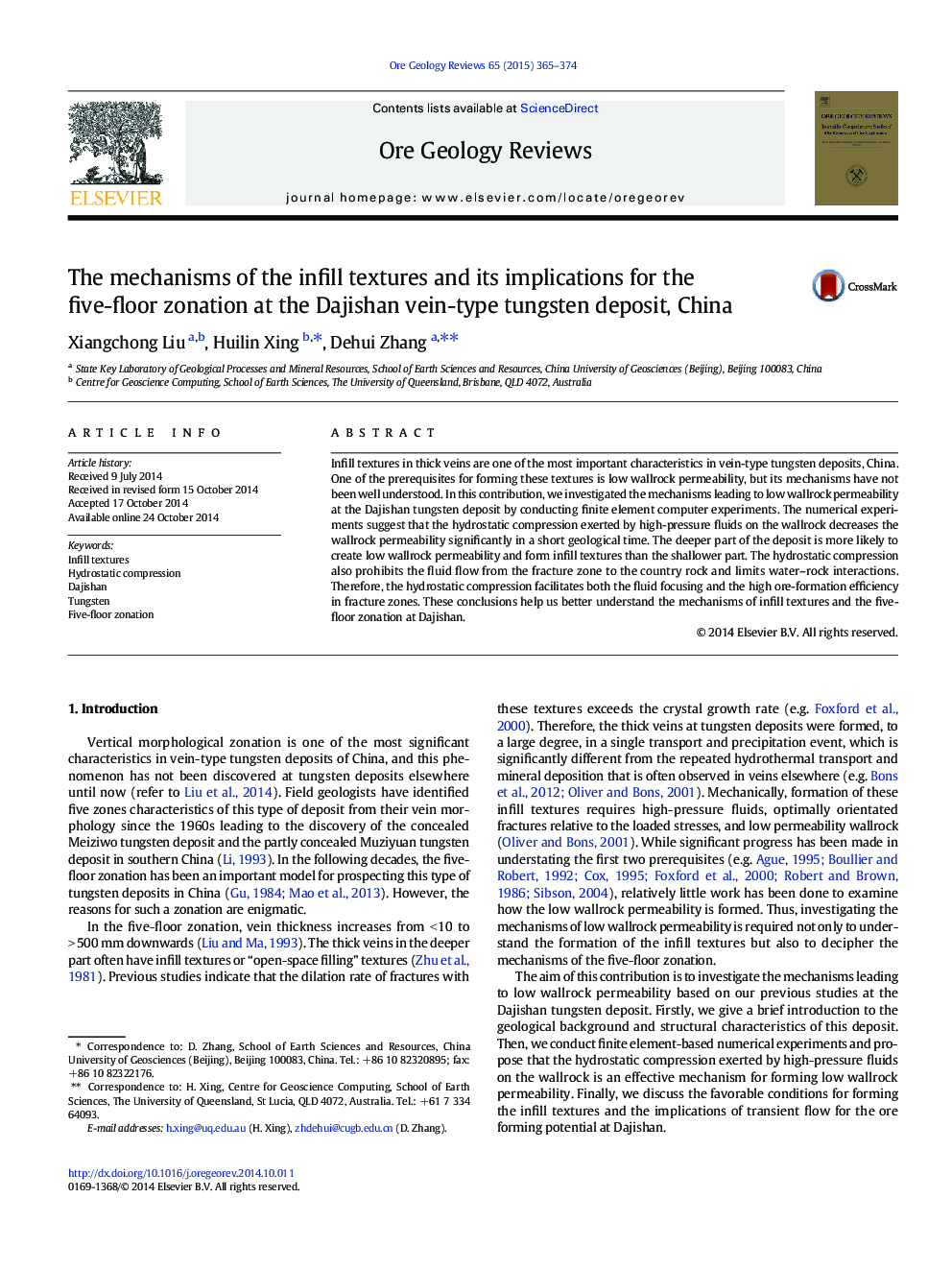| Article ID | Journal | Published Year | Pages | File Type |
|---|---|---|---|---|
| 4697262 | Ore Geology Reviews | 2015 | 10 Pages |
•Infill textures in thick veins are common in vein-type tungsten deposits, China.•Formation of infill textures requires low wallrock permeability.•Hydrostatic compression (HC) is a mechanism in decreasing wallrock permeability.•HC favors focused flow and high ore-formation efficiency in fractures at Dajishan.•The deeper part is more likely to form infill textures than the shallower part.
Infill textures in thick veins are one of the most important characteristics in vein-type tungsten deposits, China. One of the prerequisites for forming these textures is low wallrock permeability, but its mechanisms have not been well understood. In this contribution, we investigated the mechanisms leading to low wallrock permeability at the Dajishan tungsten deposit by conducting finite element computer experiments. The numerical experiments suggest that the hydrostatic compression exerted by high-pressure fluids on the wallrock decreases the wallrock permeability significantly in a short geological time. The deeper part of the deposit is more likely to create low wallrock permeability and form infill textures than the shallower part. The hydrostatic compression also prohibits the fluid flow from the fracture zone to the country rock and limits water–rock interactions. Therefore, the hydrostatic compression facilitates both the fluid focusing and the high ore-formation efficiency in fracture zones. These conclusions help us better understand the mechanisms of infill textures and the five-floor zonation at Dajishan.
